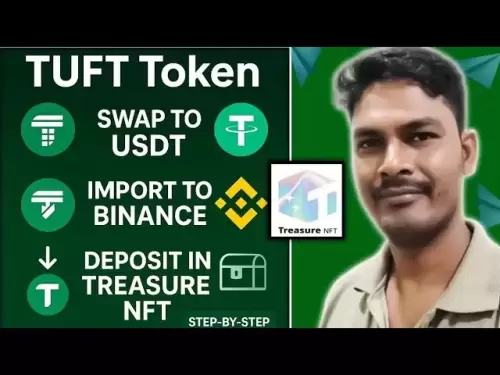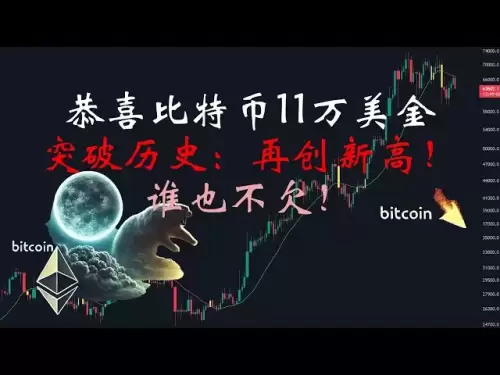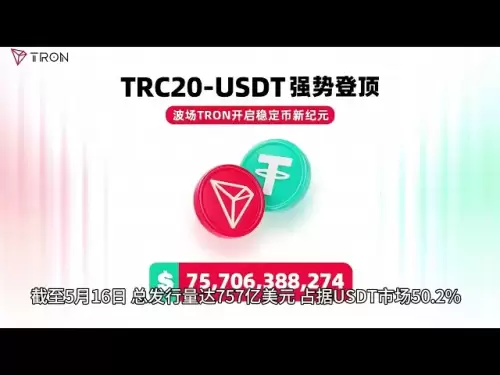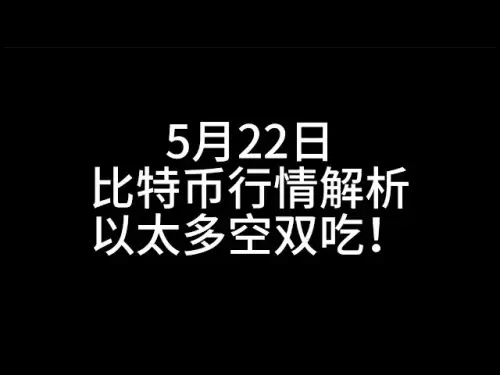 |
|
 |
|
 |
|
 |
|
 |
|
 |
|
 |
|
 |
|
 |
|
 |
|
 |
|
 |
|
 |
|
 |
|
 |
|
このお金の進化は、理論とはほど遠いものです。 Melloによると、支払いネットワーク、カストディアン、および金融サービスプロバイダーの業界プレーヤーが基礎を築いています

The race to define the future of money is speeding up—and according to industry leaders, stablecoins are right at the center.
お金の未来を定義するための競争は高速化されています。業界のリーダーによると、Stablecoinsは中心にいます。
“It's clear that the most important item on our roadmap is understanding how quickly we can move, and it's obvious that the next three years are the fastest we will ever see in the development of digital assets,” said Sergio Mello, head of stablecoins at Anchorage Digital during Paxos’ Global Dollar Network event in New York City.
「ロードマップの最も重要なアイテムは、私たちがどれだけ速く移動できるかを理解することであり、次の3年間がデジタル資産の開発でこれまでに見られる最速であることは明らかです」と、ニューヨーク市でのPaxosのグローバルダラーネットワークイベント中のAnchorage DigitalのStablecoinsの責任者であるSergio Melloは述べています。
“2025 will have clarity here, 2026 will have clarity elsewhere, and 2027 is when it’s all going to happen.”
「2025年はここで明確になり、2026年は他の場所で明確になり、2027年はすべてが起こるのです。」
Mello wasn’t speaking in hypotheticals. From his vantage point inside one of the first federally chartered crypto banks in the U.S., he sees stablecoins not as niche financial instruments but as a foundational upgrade to the global monetary system.
メロは仮説で話していませんでした。彼は、米国で最初の連邦政府チャーターされた暗号銀行の1つ内にある彼の有利な場所から、Stablecoinsをニッチな金融商品としてではなく、グローバル通貨システムへの基礎的なアップグレードと見なしています。
“Stablecoins are a better representation of fiat, a better way to transfer fiat, but it's really just money that you're moving,” he said. “We’re merging the transport layer and the value layer into the same instrument.”
「スタブルコインはフィアットのより良い表現であり、フィアットを移すためのより良い方法ですが、あなたが動いているのは本当にお金だけです」と彼は言いました。 「輸送層と値層を同じ機器に統合しています。」
This evolution of money is far from theoretical.
このお金の進化は、理論とはほど遠いものです。
According to Mello, industry players across payment networks, custodians, and financial service providers are laying the groundwork for what he called a “critical mass” of institutional adoption — something he predicted will hit within the next 12 to 24 months, especially in payments. “That’s where the money is going,” he said.
Melloによると、支払いネットワーク、カストディアン、および金融サービスプロバイダーの業界プレーヤーは、彼が制度的養子縁組の「クリティカルマス」と呼んだものの基礎を築いています。 「それがお金が進んでいるところです」と彼は言いました。
From experiment to infrastructure
実験からインフラストラクチャまで
Stablecoins were once seen as tools for crypto speculators or offshore arbitrageurs. However, according to Raj Dhamodharan, EVP at Mastercard, that perception is shifting fast.
かつては、かつては暗号投機家または沖合の仲裁人のためのツールと見なされていました。しかし、MasterCardのEVPであるRaj Dhamodharanによると、その認識は急速に変化しています。
Stablecoins now function as the “money movement layer” across increasingly mainstream use cases, he said, adding that cross-border remittances, B2B payments, and even retail spending are already seeing traction.
Stablecoinsは、ますます主流のユースケースで「お金の移動層」として機能するようになりました、と彼は言い、国境を越えた送金、B2Bの支払い、さらには小売支出さえもすでに牽引力を発揮していると付け加えました。
For example, Mastercard is enabling cards where users can choose which currency — fiat or stablecoin — they want to spend, while merchants can choose what they want to receive. “We’ve started doing that with cards. We’ve started doing that with remittances,” Dhamodharan said.
たとえば、MasterCardは、ユーザーがどの通貨(FiatまたはStablecoin)を選択できるカードを有効にしていますが、商人は受信したいものを選択できます。 「私たちはカードでそれを始めました。送金でそれを始めました」とDhamodharanは言いました。
Ahmed Zifzaf of Worldpay echoed this, describing how their customers use stablecoins for real-time treasury management. “You can start to see how you accelerate all of these payment and financial flows,” he said, noting that Worldpay is focused on working with “battle-tested” blockchains like Solana to scale those efforts.
WorldPayのAhmed Zifzafはこれを反映し、顧客がリアルタイムの財務管理にStablecoinsを使用する方法を説明しました。 「これらの支払いと財政の流れをすべて加速する方法を確認することができます」と彼は言いました。WorldPayは、Solanaのような「戦闘テストされた」ブロックチェーンと協力してそれらの努力を拡大することに焦点を当てていると述べました。
The bankers’ dilemma
銀行家のジレンマ
Still, not every financial institution is rushing in.
それでも、すべての金融機関が急いでいるわけではありません。
“What constraints do you have because you are a bank?” asked Luca Cosentino of Cross River. The barriers are real, he said — legacy tech stacks, compliance risk, and cultural resistance all slow the pace of innovation. But the split in strategy is becoming clear.
「あなたは銀行だからどんな制約がありますか?」クロスリバーのルカコセンティーノに尋ねた。障壁は本物だと彼は言った - レガシー技術スタック、コンプライアンスリスク、文化的抵抗はすべて、イノベーションのペースを遅くしている。しかし、戦略の分割は明らかになっています。
“Certain banks are not going to touch crypto [...] some others will focus on custody [...] some others are going to be focused on money movements,” he said. “But I have very little doubt that a huge portion of the banks [...] is going to go into crypto one way or another.”
「特定の銀行は暗号に触れない[...]他の銀行は監護権に焦点を合わせます[...]他の銀行はお金の動きに焦点を合わせようとしています」と彼は言いました。 「しかし、銀行の大部分[...]が何らかの形で暗号に入ることはほとんど疑いの余地がありません。」
Sunil Sachdev from Fiserv noted the same divide. “We had about 12 banks ready to go,” he said, describing how new rules under SAB 121 effectively froze many of those plans. “Then everything, in just one day, kind of closed shop.” But the interest hasn’t gone away, particularly among smaller banks.
FiservのSunil Sachdevは、同じ格差に注目しました。 「私たちは約12の銀行が準備ができていました」と彼は言い、SAB 121の下での新しい規則がこれらの計画の多くを効果的に凍結したことを説明しました。 「その後、たった1日で、すべてが閉店しました。」しかし、特に小規模銀行の間では、関心は消えていません。
“The bigger guys seem to be cautious,” he said. “The smaller banks are much more aggressive because they're looking to use this as an opportunity to bring in low-cost deposits. They're looking at this as an opportunity to differentiate themselves.”
「より大きな男たちは慎重に見えます」と彼は言いました。 「小規模な銀行は、これを低コストの預金を持ち込む機会として使用しようとしているため、はるかに攻撃的です。彼らはこれを自分自身を区別する機会と考えています。」
He painted a vivid picture of how a small-town bank might evolve: three branches, deep community ties, and now a road map to become a “trusted node” in a global blockchain network, offering tokenized financial products not available elsewhere.
彼は、小さな町の銀行がどのように進化するかについての鮮明な絵を描きました:3つの支店、深いコミュニティの絆、そして今ではグローバルブロックチェーンネットワークで「信頼できるノード」になるロードマップは、他の場所では利用できない象徴的な金融商品を提供します。
Better than Fiat
フィアットよりも良い
While many in the industry assume institutions will lead adoption, Kraken’s Mark Greenberg isn’t so sure. “Americans might be actually some of the last groups to adopt a global dollar,” he said. But outside the U.S., demand is strong.
業界の多くの人々は、機関が養子縁組をリードすると仮定していますが、KrakenのMark Greenbergはそれほど確信していません。 「アメリカ人は、実際には世界のドルを採用する最後のグループの一部かもしれません」と彼は言いました。しかし、米国以外では、需要は強いです。
“I do believe a global dollar is better than holding fiat, and we're going to see it,” he said, adding that this is more important in countries where inflation erodes value and yield is scarce.
「グローバルなドルはフィアットを保持するよりも優れていると信じており、私たちはそれを見るつもりです」と彼は言いました。
And it won’t just be used for savings. “You save your money there; you use a card there. At some point, you transfer to your friends, you pay your bills,” he said. “And maybe you buy a meme coin or a stock.”
そして、それは貯蓄に使用されるだけではありません。 「そこでお金を節約します。そこでカードを使用します。ある時点で、友人に転校し、請求書を支払います」と彼は言いました。 「そして、たぶんあなたはミームコインまたは在庫を買うかもしれません。」
Mike Dudas of 6th Man Ventures suggested the app layer will drive consumer behavior. Stablecoins “is the fundamental thing that people need to be able to store value in,”
6人のMan VenturesのMike Dudasは、アプリ層が消費者の行動を促進することを示唆しました。 Stablecoinsは、「人々が価値を保存できるようにするために必要な基本的なものです」
免責事項:info@kdj.com
提供される情報は取引に関するアドバイスではありません。 kdj.com は、この記事で提供される情報に基づいて行われた投資に対して一切の責任を負いません。暗号通貨は変動性が高いため、十分な調査を行った上で慎重に投資することを強くお勧めします。
このウェブサイトで使用されているコンテンツが著作権を侵害していると思われる場合は、直ちに当社 (info@kdj.com) までご連絡ください。速やかに削除させていただきます。





























































![Pi Token [Pi]は、価格チャートの下降トレンドを好転させ始めました。 Pi Token [Pi]は、価格チャートの下降トレンドを好転させ始めました。](/uploads/2025/05/22/cryptocurrencies-news/articles/pi-token-pi-begun-downtrend-price-charts/682ec237630ec_image_500_300.webp)